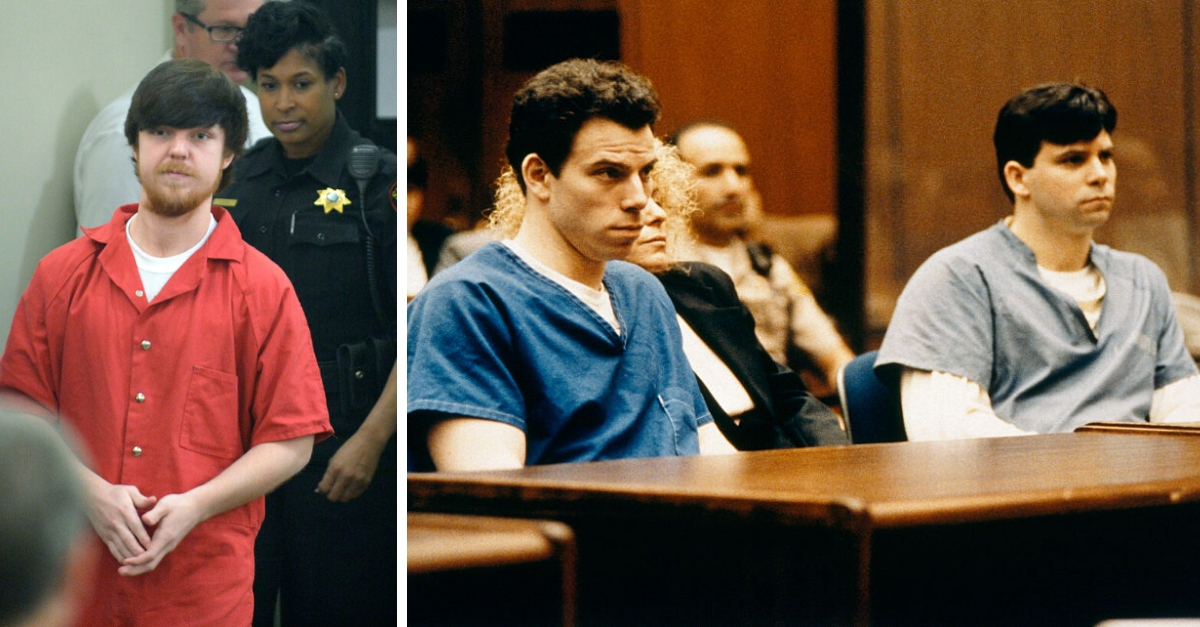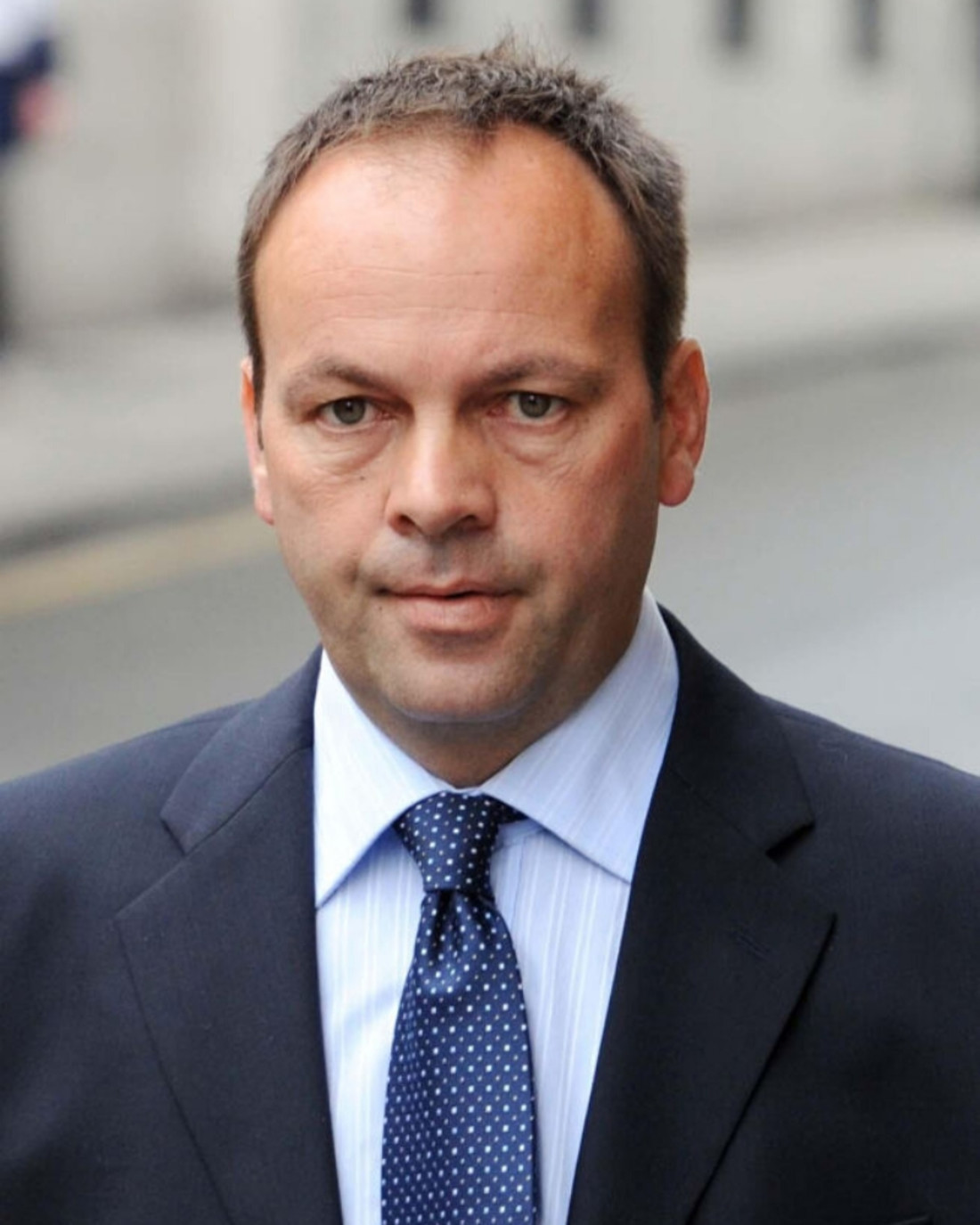
It's hard to wrap your mind around the reasons why people kill one another. Murder is often associated with insanity and desperation. People are either driven to violence through forces beyond their control or turn to it when they need something so badly or have nothing left at all. There's a whole group of killers who don't necessarily fall into either category, however. What drives rich people to commit heinous crimes?
Some believe that a certain degree of success, especially monetary success, can make a person mad with power. They feel as if they can do anything without facing consequences. Indeed, some of these millionaire murderers certainly thought that was the case.
Other rich people who kill do so in pursuit of building their empire. The addiction to success and the need for continuing the upward trajectory drives them to manifest greed in horrifying ways. In a world where people are so calculated with their risks, these people were willing to lose the things others would only theoretically kill to have.
H. H. Holmes is known as one of America's first serial killers. In the late 1800s, he was believed to have killed anywhere from 25 to 200 people. Some of those took place in his so-called "Murder Castle," a hotel with traps, torture chambers, and more that he allegedly had built in Chicago.
In the end, it would be one man's murder and an insurance scam that did H. H. Holmes in. He was sentenced to death at 35 years old in 1896.
Robert Durst was the subject of the HBO documentary The Jinx. Durst was the eldest son of Seymour Durst, founder of a multi-billion-dollar real estate empire. Robert Durst was suspected of three murders in three states when the documentary was created. While his mic was still on, he is believed to have confessed to the murders.
Durst was tried for and acquitted of the murder of his neighbor in Galveston, Texas. He was later convicted of the murder of his longtime friend Susan Berman, whom he allegedly killed when she threatened to connect him to the death of his first wife, Kathleen McCormack Durst. He died in custody in January 2022.
Brothers Erik and Lyle Menendez never denied killing their parents, Jose and Kitty Menendez, in their Beverly Hills home. They weren't initially suspected, but they later cooperated when they were accused. It was the potential reasons why that turned this case into a media firestorm.
Many believe greed motivated the two young men, who in the months following their parents' deaths would spend exorbitant amounts of money on vacations, cars, and homes.
The brothers claimed there was more to their actions than simply being greedy 20-somethings, however. They painted the portrait of a torturous home life filled with psychological and sexual abuse. Though they were convicted and remain in jail to this day, they stand by their accounts of what their family was truly like.
Issei Sagawa was born into a wealthy family and made headlines in 1981 for the murder of Renée Hartevelt, a Dutch classmate at the Sorbonne Academy in Paris.
Sagawa invited Hartevelt over with the pretense of dinner and intellectual conversation. He then shot and killed her before performing sex acts on her body. He was discovered both disposing of and consuming the body.
Shockingly, he never served time for his crimes. His wealthy parents found a psychologist to find him unfit for trial. He then enjoyed celebrity status for years before fading into obscurity.
Michael Skakel was the nephew of Ethel Kennedy. Connections to a family of that magnitude generally mean you're set for life. However, Skakel's actions took him down the wrong path.
Skakel was found to have murdered 15-year-old friend and neighbor Martha Moxley in 1975. A friend would later testify that he bragged about it, saying, "I'm going to get away with murder. I'm a Kennedy."
He was convicted of the murder in 2002 but has fought the case since. He was released after being granted a new trial in 2013, and the conviction was vacated in 2018.
Phil Spector had it all in the 1960s. He was credited with developing the Wall of Sound. He produced records for the Beatles, Ike and Tina Turner, and Cher. He was even inducted into the Rock and Roll Hall of Fame in 1989.
In 2003, his entire life changed when actress Lana Clarkson was killed in his California home. Spector claimed her death was an accidental suicide that resulted from her pulling the trigger while holding a gun. Witnesses later noted the gun was in Spector's hands, which DNA confirmed.
Spector was indicted in the murder later that year. A mistrial occurred in 2007 due to a deadlocked jury. In March 2009, he was convicted in a second trial. He died in prison of complications of COVID-19.
It's rare to find someone dubbed both a philanthropist and a murderer, but John du Pont is among the rare few. He was heir to the fortune of the du Pont family, who owned gunpowder mills that evolved into a chemical corporation. His passion was wrestling. He served as a financial backer, as well as a freestyle coach.
In 1996, Olympic freestyle wrestler Dave Schultz was shot and killed while training at a facility owned by John du Pont. After the shooting, du Pont barricaded himself in his mansion for two days before police were able to take him into custody. Though he was found guilty of the murder, he was also believed to be suffering from paranoid schizophrenia. He died in prison in 2010.
At 21 years old, Dana Ewell was sentenced to three life sentences for coordinating the killing of his parents and sister. Ewell enlisted the help of his roommate to kill his family to access the family's $8 million estate.
Ewell decided on killing his parents after they discovered he lied to others and said he was independently wealthy as a result of owning an airplane transport company and playing the stock market. The lies caused his parents to cut him off. Ironically, the family fortune was left to Ewell but instructed to be paid out in installments. It was his furor at this and lack of mourning that tipped others off to his involvement.
Allen Blackthorne was responsible for the murder of his ex-wife, Sheila Bellush. The couple divorced in 1987 and entered a brutal custody dispute over their two children. After Bellush was awarded custody, Blackthorne began to stalk her.
Bellush and her new husband welcomed quadruplets in 1995. In 1997, sick of Blackthorne's constant surveillance, they moved from San Antonio to Florida. Blackthorne hired golfing buddy Daniel Alex Rocha to travel there to beat Bellush up, renewing claims that she was abusive toward their children. Through introductions, he encountered Jose Luis Del Toro, who agreed to murder her for $14,000.
Del Toro traveled there to carry out the attack but almost backed out at the last minute when seeing Bellush caring for her children. However, after Bellush spotted him breaking into the home, he was left with no choice. He shot her and slit her throat as her 2-year-olds looked on. Blackthorne received two consecutive life sentences for orchestrating the attack. He was targeted by gangs in prison and died in 2014.
Joran van der Sloot is best known as the primary suspect in the Natalee Holloway disappearance, but it wasn't her death he went to jail for. Van der Sloot was convicted of beating Stephany Flores to death on the fifth anniversary of Natalee Holloway's disappearance. He was arrested in Chile after having fled Peru, where he killed Flores.
Van der Sloot admitted to killing both women but later withdrew those confessions. His defense maintains his gambling addiction played a role in the crimes, as he met both women in casinos. Van der Sloot had been known to sneak out to casinos throughout his youth in Aruba, gambling with his parents' money.
Nathan Leopold and Richard Loeb were two law school students from wealthy families. So why kill a 14-year-old boy? For the thrill, according to the duo. The two started with small crimes and believed their combined genius could help them get away with anything.
It was a small detail in the 1924 crime that led to their capture. When they disposed of the body of Bobby Franks, they dropped a pair of glasses. The prescription of the lenses was used to connect Nathan to the crime. When confronted by the police, the two confessed and were convicted. Loeb was murdered in prison. Leopold worked to redeem himself and served as a model prisoner. He was released after 33 years in prison.

Adrian Prout was one of the prime suspects in estranged wife Kate Prout's disappearance. She disappeared the day after she declared her intention to divorce him. The wealthy businessman didn't alert the police to his wife's disappearance for five days.
Despite being convicted of Kate's death in 2010, Adrian Prout wouldn't tell her family where her remains could be found for another four years.
Ashton Sachs was far from a suspect when his parents, Andra and Brad Sachs, were found shot to death in their Orange County home. He was a 19-year-old college student who seemed devastated by their loss.
Ashton Sachs teamed up with his brother to get custody of his younger siblings, who had also been shot. He stayed by their sides at the hospital and delivered a crushing eulogy of his parents at their funerals.
In reality, Sachs had driven 18 to 20 hours from Seattle to California with a plan to kill his parents, then himself. He had flown back to Seattle by morning. When police found evidence that placed him in the area, he became a suspect. He confessed when a police officer simply asked him why he did it.
Though he didn't put his mother's $80 million fortune at the heart of the crime, police believed it to be a motivating factor. He claimed he wasn't sure why he did it but later cited being the least favorite of his siblings as a reason. He was sentenced to four consecutive life sentences, two for murder and two for attempted murder.
Ethan Couch's bad decision making and abhorrent defense make him an unforgettable wealthy murderer. Couch was 16 years old when he stole beer from a Walmart and sped off in his Ford truck with seven passengers, driving at 70 mph in a 40 mph zone.
Farther down a two-lane road was a stalled SUV driven by Breanna Mitchell. Friend Hollie Boyles, her daughter Shelby, and youth minister Brian Jennings came to help her. Two children waited for Brian in the car.
Couch's truck swerved off the road and into Breanna Mitchell's SUV, then crashed into Brian Jennings' parked car, which spun out and hit an oncoming Volkswagen Beetle. The truck continued to flip over before hitting a tree. Mitchell, Boyles, Shelby, and Jennings were killed. The children in Jennings' car and the passengers in the Volkswagen survived. Couch and his seven passengers, who were not wearing seat belts, survived, with one becoming paralyzed.
Couch was found to have a blood-alcohol level three times the legal limit. He also had marijuana and Valium in his system. He was charged with four counts of intoxication manslaughter and two counts of intoxication assault. In his defense, Couch's attorney argued he couldn't comprehend consequences to his actions because he was a product of "affluenza" and had been taught money could fix anything. He did time in rehab before a prison sentence, which he was released from in 2018.




